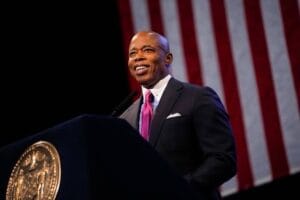NYS: CJWG releases draft criteria for identifying disadvantaged communities

New York State has released the draft criteria developed by the Climate Justice Working Group (CJWG) for identifying disadvantaged communities.
According to the statement released by the department, the draft criteria will guide the equitable implementation of New York’s ambitious Climate Leadership and Community Protection Act (Climate Act).
“Pursuant to the Climate Act’s disadvantaged community provisions, the draft includes an interactive map and a list of communities the criteria would cover for directing programs and projects to reduce air pollution and climate-altering greenhouse gas emissions, provide economic development opportunities, and target clean energy and energy efficiency investments,” the statement reads.
While speaking about the draft, State Department of Environmental Conservation (DEC) Commissioner and Climate Action Council Co-Chair Basil Seggos said, “Advancing climate justice is central to New York’s Climate Act and our efforts to transition all New Yorkers to a cleaner, greener future.
“I thank the Climate Justice Working Group for the collaboration and extensive analysis that went into the draft disadvantaged communities list and criteria released today for public comment.
“This marks a significant milestone in New York’s efforts to advance climate justice and I encourage all New Yorkers to review these draft documents and support this ongoing work.”
New York State Energy Research Development Authority (NYSERDA) President and CEO and Climate Action Council Co-Chair Doreen M. Harris said, “Along with this draft criteria for disadvantaged communities, I encourage the public to review the Climate Action Council’s draft scoping plan and participate in the public hearings to shape the final product as we work to implement a bold climate agenda.
“These efforts are clearly and mindfully incorporating climate justice at its core to deliver opportunities and improved quality of life to under resourced areas across New York State.”
The Climate Act requires the State to invest or direct resources to ensure that disadvantaged communities receive at least 35 percent, with the goal of 40 percent, of overall benefits of spending on clean energy and energy efficiency programs – one of several ways the Climate Act focuses on prioritizing climate justice.
The State’s CJWG, established by the Climate Act, voted unanimously to approve the release of draft criteria for public comment.
Comprised of 13 representatives from organizations working in frontline Environmental Justice communities across New York State and supported by a team of State agency and technical experts, the CJWG worked to identify disadvantaged communities by evaluating 45 indicators including: environmental exposures, burdens, and climate change risks; sociodemographic factors such as age, race, and income; pollution characteristics; and health vulnerabilities.
Using a methodology that worked at the census tract level, the working group combined and ranked all indicators into an overall score. DEC, NYSERDA, and the New York State Departments of Health and Labor supported the CJWG’s efforts.
In addition to the geographic component, the draft criteria include low-income households located anywhere in New York State for the purpose of investing or directing clean energy and energy efficiency programs, projects, and investments.
These individual households report annual total income at or below 60 percent of the State median income, or households otherwise eligible for low-income programs.
Criteria and methods for identifying disadvantaged communities will be reviewed annually to ensure the State is accurately targeting emissions reductions and investments.
“The Climate Justice Working Group has spent nearly two years working to create a definition and map of disadvantaged communities that captures the cumulative impact of communities’ experiences,” said Sonal Jessel, Director of Policy at WE ACT for Environmental Justice and member of the CJWG.
“We have created and voted on a definition that centers race because we know from thousands of research studies that race is the number one indicator of environmental and climate health impacts, and I am excited to finally release the definition and map to the public so that we can further uplift community voices.
“Thank you to my fellow working group members and our partners at Illume Advising, as well as the DEC, NYSERDA, Department of Health, and other state agencies for getting us to this point.”
Eddie Bautista, Executive Director of the New York City Environmental Justice Alliance (NYC-EJA) and member of the CJWG, said, “Identifying communities that are disadvantaged is the first step in advancing the climate justice agenda outlined in the CLCPA.
“While we undertook an intensive process to develop these draft criteria, which included significant consideration and assessment of how communities are currently impacted by environmental burdens and health, income, and other social disparities; it is important to note that this is a starting point, and we should expect that these criteria will evolve over time as we collect more data and get better insight on the extent to which frontline communities across the state are overburdened.
“I am excited to hear feedback on these draft criteria from members of the public, including residents of frontline communities. I also want to express my appreciation to my fellow working group members for their dedication to the process and helping us get to this point.”












